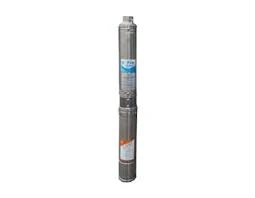Oct . 10, 2024 04:28 Back to list
how do submersible pumps work
How Do Submersible Pumps Work?
Submersible pumps are essential devices used in various applications, from draining flooded basements to assisting in agricultural irrigation. Understanding how these pumps operate reveals their effectiveness and versatility.
A submersible pump is designed to function while submerged underwater. Unlike standard pumps that operate at the surface, submersible pumps are installed below the fluid they are meant to move, making them more efficient for specific tasks. The design of these pumps allows them to push fluid to the surface rather than pulling it, which considerably reduces the risk of cavitation, a phenomenon that can cause severe damage and reduce the pump's efficiency.
Components of a Submersible Pump
Typically, a submersible pump comprises several key components a motor, a pump body, a suction screen, and a discharge outlet. The motor is hermetically sealed and placed in a waterproof casing to prevent damage from the water. Generally, these motors are driven by electricity, though some models can operate on alternate energy sources.
The pump body contains the impeller, a crucial part that moves the fluid. When powered on, the motor spins the impeller, creating centrifugal force that pushes the water towards the discharge outlet. The suction screen at the base of the pump prevents debris and larger particles from entering the system, which could lead to clogs and reduce the pump's efficiency.
Operating Principle
The functioning of submersible pumps is based on the principle of displacement, whereby the spinning impeller transfers energy to the liquid. Initially, water enters the pump through the suction screen. Once inside, the impeller spins and imparts kinetic energy to the water, increasing its velocity. The design of the pump casing converts this velocity into pressure, pushing the water up through the discharge outlet.
how do submersible pumps work

This process is highly efficient, as the pressure created by the impeller forces the water upward, mitigating the need for additional suction. Moreover, because the pump is located underwater, it is more energy-efficient, as the surrounding water helps support the pump's weight and reduce wear.
Applications of Submersible Pumps
Submersible pumps are utilized in various applications due to their efficiency and ease of use. They are commonly used in residential settings for draining water from flooded basements, removing excess water from construction sites, and emptying ponds or pools. In agriculture, these pumps help in irrigation systems, transporting water from wells directly to crop fields. They are also pivotal in industrial applications for dewatering, wastewater treatment, and even chemical processing.
Advantages of Submersible Pumps
One of the primary advantages of submersible pumps is their efficiency. Since they are submerged, they are less prone to overheating. Furthermore, their design minimizes the risk of air getting into the system, which can hinder operation. They are also quieter than surface pumps, making them ideal for applications in residential areas or quiet environments.
Additionally, the compact design of submersible pumps allows them to fit into tight spaces where larger pumps couldn’t be installed, making them a versatile choice across various environments.
Conclusion
Understanding how submersible pumps work can greatly assist individuals and businesses in choosing the proper pumping solutions for their specific needs. With their efficient operation, versatility in application, and compact design, submersible pumps play a crucial role in water management across the globe. Whether for domestic use, agricultural needs, or industrial processes, these pumps are invaluable tools in ensuring the efficient movement of water.
-
Submersible Water Pump: The Efficient 'Power Pioneer' of the Underwater World
NewsJul.01,2025
-
Submersible Pond Pump: The Hidden Guardian of Water Landscape Ecology
NewsJul.01,2025
-
Stainless Well Pump: A Reliable and Durable Pumping Main Force
NewsJul.01,2025
-
Stainless Steel Submersible Pump: An Efficient and Versatile Tool for Underwater Operations
NewsJul.01,2025
-
Deep Well Submersible Pump: An Efficient 'Sucker' of Groundwater Sources
NewsJul.01,2025
-
Deep Water Well Pump: An Efficient 'Sucker' of Groundwater Sources
NewsJul.01,2025
-
 Submersible Water Pump: The Efficient 'Power Pioneer' of the Underwater WorldIn the field of hydraulic equipment, the Submersible Water Pump has become the core equipment for underwater operations and water resource transportation due to its unique design and excellent performance.Detail
Submersible Water Pump: The Efficient 'Power Pioneer' of the Underwater WorldIn the field of hydraulic equipment, the Submersible Water Pump has become the core equipment for underwater operations and water resource transportation due to its unique design and excellent performance.Detail -
 Submersible Pond Pump: The Hidden Guardian of Water Landscape EcologyIn courtyard landscapes, ecological ponds, and even small-scale water conservancy projects, there is a silent yet indispensable equipment - the Submersible Pond Pump.Detail
Submersible Pond Pump: The Hidden Guardian of Water Landscape EcologyIn courtyard landscapes, ecological ponds, and even small-scale water conservancy projects, there is a silent yet indispensable equipment - the Submersible Pond Pump.Detail -
 Stainless Well Pump: A Reliable and Durable Pumping Main ForceIn the field of water resource transportation, Stainless Well Pump has become the core equipment for various pumping scenarios with its excellent performance and reliable quality.Detail
Stainless Well Pump: A Reliable and Durable Pumping Main ForceIn the field of water resource transportation, Stainless Well Pump has become the core equipment for various pumping scenarios with its excellent performance and reliable quality.Detail
